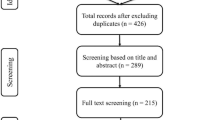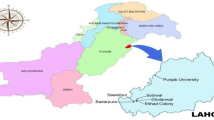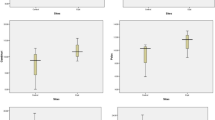Abstract
The present study deals with analyzing forest health, its parameters, and suitability of hyperspectral data for vegetation health-related studies. Sholayar reserve forest in Kerala has a huge reserve of equatorial moist evergreen forest and demands preservation in every respect. Due to increased human interferences coupled with possible climate change, its health is undergoing a stage of deterioration. Stress levels in the canopy were assessed using a number of stress-related pigments. Detailed study of vegetation response to canopy leaf pigments have been carried out in the study. Airborne Visible Infrared Imaging Spectrometer Next Generation (AVIRIS-NG) data provides immense possibilities to study a number of stress-related pigments like anthocyanin, carotenoid, lignin, chlorophyll-a, b etc. Dominant species in these forests are Holigarna arnottiana, Grevillea robusta, Grewia tiliifolia, Syzygium cumini, Alstonia Scholaris, Cinnamomum verum, Artocarpus heterophyllus, Bischofia javanica, Mangifera indica, Bombax ceiba, Anogeissus latifolia, Terminalia paniculata etc. Apart from luscious natural vegetation, plantation of teak (Tectona Grandis), rubber (Hevea brasiliensis), tea (Camellia sinensis), Coffee (Coffee Arabica), Palm-Oil tree (Elaeis guineensis) etc. also exists. Field data pertaining to one of the selected pigments was correlated with remotely sensed pigment estimates. Correlation of field measured chlorophyll concentration and EVI showed R2 = 0.421. Similarly, the anthocyanin index showed a correlation of R2 = 0.319. In the Sholayar Reserve Forest (493.0 km2) an area of 141.0 km2 was found to be in a healthy state. Whereas about 218.0 km2 of area exhibit moderately healthy condition and 77.0 km2 area was in the least healthy state.











Similar content being viewed by others
References
Tuominen, J., Lipping, T., Kuosmanen, V., & Haapanen, R. (2009). Remote sensing of forest health. In Geoscience and remote sensing. IntechOpen.
Kolb, T. E., W. W. C., & Wagner, M. R. (n.d.). Forest health from different perspective. 1994, 5–13.
Leopold, A. (1949). A sand county Almanac: And sketches here and there (Outdoor Essays & Reflections). Oxford University Press.
Ciesla, W. M. (2000). Remote sensing in forest health protection. CRC Press.
Franklin, S. E. (2001). Remote sensing for sustainable forest management. Boca Raton, New York: CRC Press.
Solberg, S., Næsset, E., Lange, H., & Bollandsås, O. M. (2004). Remote sensing of forest health. International Archives of Photogrammetry, Remote Sensing and Spatial Information Sciences, 36(Part 8), W2.
Tuominen, J., Lipping, T., & Kuosmanen, V. (2008). Assesment of ENVI forest health tool in detection of dust and seepage contaminated forest areas. In Geoscience and remote sensing symposium, 2008. IGARSS 2008. IEEE international (Vol. 3, pp. III–1358). IEEE.
Lévesque, J., & King, D. J. (2003). Spatial analysis of radiometric fractions from high-resolution multispectral imagery for modelling individual tree crown and forest canopy structure and health. Remote Sensing of Environment,84(4), 589–602.
Kim, Y., Glenn, D. M., Park, J., Ngugi, H. K., & Lehman, B. L. (2010). Hyperspectral image analysis for plant stress detection. In 2010 Pittsburgh, Pennsylvania, June 20–June 23, 2010 (p. 1). American Society of Agricultural and Biological Engineers.
Nilsson, H. (1995). Remote sensing and image analysis in plant pathology. Annual Review of Phytopathology,33(1), 489–528.
Prabhakar, M., Prasad, Y. G., Thirupathi, M., Sreedevi, G., Dharajothi, B., & Venkateswarlu, B. (2011). Use of ground based hyperspectral remote sensing for detection of stress in cotton caused by leafhopper (Hemiptera: Cicadellidae). Computers and Electronics in Agriculture,79(2), 189–198.
Goodenough, D. G., Dyk, A., Niemann, K. O., Pearlman, J. S., Chen, H., Han, T., et al. (2003). Processing Hyperion and ALI for forest classification. IEEE Transactions on Geoscience and Remote Sensing,41(6), 1321–1331.
Ustin, S. L., Roberts, D. A., Gamon, J. A., Asner, G. P., & Green, R. O. (2004). Using imaging spectroscopy to study ecosystem processes and properties. AIBS Bulletin,54(6), 523–534.
Goodenough, D. G., Pearlman, J., Chen, H., Dyk, A., Han, T., Li, J., et al. (2004). Forest information from hyperspectral sensing. In Geoscience and remote sensing symposium, 2004. IGARSS’04. Proceedings. 2004 IEEE international (Vol. 4, pp. 2585–2589). IEEE.
Marschner, H., Römheld, V., & Kissel, M. (1986). Different strategies in higher plants in mobilization and uptake of iron. Journal of Plant Nutrition,9(3–7), 695–713.
Fernandez-Escobar, R., Moreno, R., & Garcıa-Creus, M. (1999). Seasonal changes of mineral nutrients in olive leaves during the alternate-bearing cycle. Scientia Horticulturae,82(1–2), 25–45.
Jolley, V. D., & Brown, J. C. (1994). Genetically controlled uptake and use of iron by plants. In J. A. Manthey, D. E. Crowley, & D. G. Luster (Eds.), Biochemistry of metal micronutrients in the rhizosphere (pp. 251–266). Boca Raton, FL: Lewis Publishers.
Chen, Y., & Barak, P. (1982). Iron nutrition of plants in calcareous soils. Advances in Agronomy,35(628), 217–240.
Wallace, A. (1991). Rational approaches to control of iron deficiency other than plant breeding and choice of resistant cultivars. In Y. Chen & Y. Hadar (Eds.), Iron nutrition and interactions in plants. Developments in plant and soil sciences (Vol. 43, pp. 323–330). Dordrecht: Springer.
Tagliavini, M., & Rombolà, A. D. (2001). Iron deficiency and chlorosis in orchard and vineyard ecosystems. European Journal of Agronomy,15(2), 71–92.
Solberg, S. (1999). Forest health monitoring: Evaluation of methods, trends and causes based on a Norwegian nationwide set of monitoring plots. Norway: Norsk Institutt for Skogforskning, NISK.
Wang, L., & Wei, Y. (2016). Revised normalized difference nitrogen index (NDNI) for estimating canopy nitrogen concentration in wetlands. Optik-International Journal for Light and Electron Optics,127(19), 7676–7688.
Swarupanandan, K., Sasidharan, N., Chacko, K. C., & Basha, S. C. (1998). Studies on the Shola forests of Kerala. Research Report.
Ranganathan, C. R. (1938). Studies in the ecology of the shola grassland vegetation of the Nilgiri Plateau. Indian Forester,64(9), 523–541.
Gupta, R. K., & Shankarnarayan, K. A. (1962). Ecological status of the grasslands in South India. Tropical Ecology,3(1–2), 75.
Meher-Homji, V. M. (1984). A new classification of the phytogeographic zones of India. Indian Journal of Botany,7(2), 224–233.
Davidar, E. R. C. (1971). A note on the status of the Nilgiri Tahr in the grass hills in the Anamalais. Journal of the Bombay Natural History Society,68(2), 347–354.
Heute, A. R., Liu, H. Q., Batchily, K., & Van Leeuwen, W. (1997). A comparison of vegetation indices over a global set of TM images for EOS-MODIS. Remote Sensing of Environment-New York-,59, 440–451.
Ceccato, P., Flasse, S., Tarantola, S., Jacquemoud, S., & Grégoire, J.-M. (2001). Detecting vegetation leaf water content using reflectance in the optical domain. Remote Sensing of Environment,77(1), 22–33.
Gitelson, A., & Merzlyak, M. N. (1994). Spectral reflectance changes associated with autumn senescence of Aesculus hippocastanum L. and Acer platanoides L. leaves. Spectral features and relation to chlorophyll estimation. Journal of Plant Physiology,143(3), 286–292.
Daughtry, C. S. (2001). Discriminating crop residues from soil by shortwave infrared reflectance. Agronomy Journal,93(1), 125–131.
Serrano, L., Penuelas, J., & Ustin, S. L. (2002). Remote sensing of nitrogen and lignin in Mediterranean vegetation from AVIRIS data: Decomposing biochemical from structural signals. Remote Sensing of Environment,81(2–3), 355–364.
Peñuelas, J., Filella, I., Biel, C., Serrano, L., & Save, R. (1993). The reflectance at the 950–970 nm region as an indicator of plant water status. International Journal of Remote Sensing,14(10), 1887–1905.
Kaufman, Y. J., & Tanre, D. (1996). Strategy for direct and indirect methods for correcting the aerosol effect on remote sensing: from AVHRR to EOS-MODIS. Remote Sensing of Environment,55(1), 65–79.
Gamon, J. A., Penuelas, J., & Field, C. B. (1992). A narrow-waveband spectral index that tracks diurnal changes in photosynthetic efficiency. Remote Sensing of Environment,41(1), 35–44.
Sims, D. A., & Gamon, J. A. (2002). Relationships between leaf pigment content and spectral reflectance across a wide range of species, leaf structures and developmental stages. Remote Sensing of Environment,81(2–3), 337–354.
Vogelmann, J. E., Rock, B. N., & Moss, D. M. (1993). Red edge spectral measurements from sugar maple leaves. Remote Sensing,14(8), 1563–1575.
Ghosh, P. P., Banik, P., Patel, N., & Pal, D. J. (2013). Vegetation stress detection with hyperspectral remote sensing for a winning agribusiness. International Journal of Business Analytics and Intelligence,1(1), 13.
Acknowledgements
Authors are grateful to Space Application Centre (SAC), ISRO (Government of India) for funding this project. Authors are also thankful towards State Forest Department, Government of Kerala for their continuous support throughout the field data collection.
Author information
Authors and Affiliations
Corresponding author
Additional information
Publisher's Note
Springer Nature remains neutral with regard to jurisdictional claims in published maps and institutional affiliations.
Rights and permissions
About this article
Cite this article
Ahmad, S., Pandey, A.C., Kumar, A. et al. Forest health estimation in Sholayar Reserve Forest, Kerala using AVIRIS-NG hyperspectral data. Spat. Inf. Res. 28, 25–38 (2020). https://doi.org/10.1007/s41324-019-00260-6
Received:
Revised:
Accepted:
Published:
Issue Date:
DOI: https://doi.org/10.1007/s41324-019-00260-6




